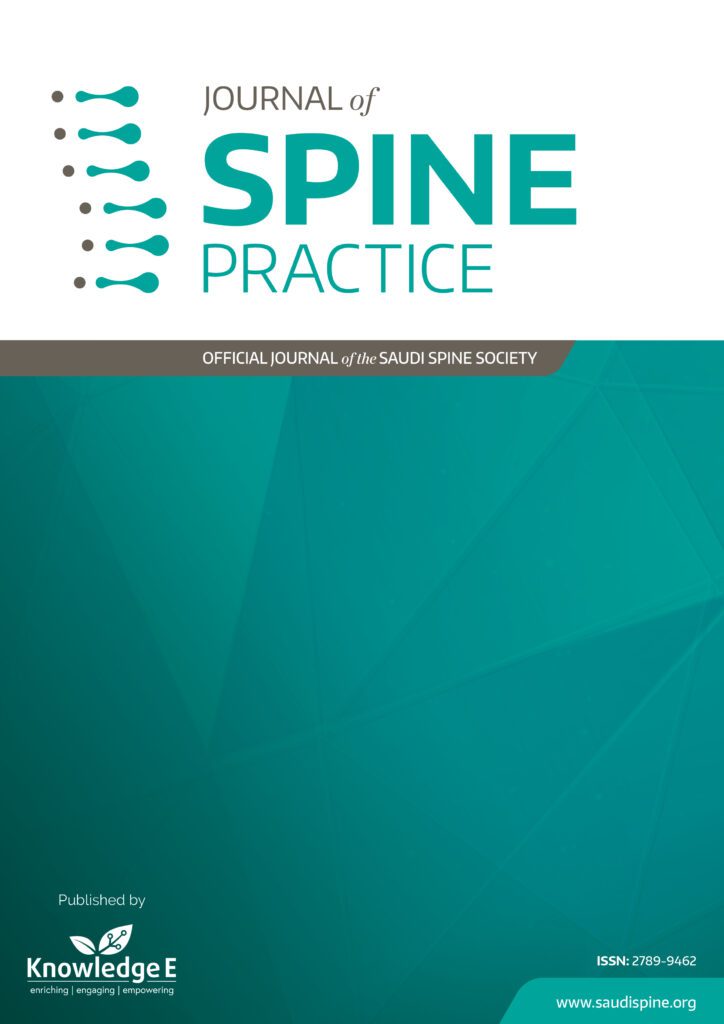
Journal of Spine Practice
ISSN: 2789-9462
Leading research in all spine subspecialties focusing on orthopaedic spine, neurosurgery, radiology, and pain management.
Spontaneous Regression of Disc Prolapse – An Underlooked Phenomena: A Case Report and Literature Review
Published date: Nov 07 2021
Journal Title: Journal of Spine Practice
Issue title: Journal of Spine Practice (JSP): Volume 1, Issue 1
Pages: 48
Authors:
Abstract:
Introduction: Intervertebral disc prolapse is a very common abnormality found in the population, that can manifest in a variety of complaints like back pain, radiculopathy, and even to the extent that it might lead to more adverse neurological deficits. Symptoms improve in majority of patients only with conservative treatment. However, some patients may require surgical intervention. In some cases, spontaneous regression of herniated disc can be seen. Thus, the interest in the phenomenon of spontaneous resorption of the herniated discs has increased, which raised the controversy regarding managing such patients. Here, we report a case of a huge lumbosacral spontaneous disc resolution at the level of L5-S1 in which clinical improvement was associated with a significant decrease in the size of a huge, herniated disc. In addition, we performed a comprehensive review of literature of all reported cases of spontaneous disc resolution to provide an updated discussion of such an underlooked phenomena.
Case Report: A 53-year-old female not known to have any medical illness presented at the Neurosurgery Clinic with complaints of chronic back pain for six years which was progressing and radiating to both of her lower extremities (right more than left) and had become more intense in the last year. It was slightly relieved by simple analgesics and aggravated by sitting or lying down. There was no history of trauma, weaknesses, or sphincteric disturbances. Upon evaluation in our clinic, local exam revealed lower back midline tenderness at the level of L5-S1 vertebrae. No tenderness was observed in the paravertebral area or facets. Straight leg raising test was positive at 70º in the right side and 90º in the left, normal power, intact sensation, normal tone, and reflexes. Negative Babinski and clonus was noted in both limbs. MRI lumbar spine showed significant right paracentral L5-S1 disk prolapse indenting the thecal sac compressing the root. A full-course and effective medical treatment was initiated as the patient was never treated properly before for her back pain, along with physical therapy and regular OPD follow-ups. A follow-up MRI a year later revealed significant reduction in the size of the disk prolapse as compared to the initial imaging study. Overall, patient’s symptoms significantly improved, and she was kept on conservative management.
Conclusion: To conclude, the case presented here shows the efficacy and validity of conservative management for patients who are diagnosed with a herniated disc in the absence of neurological deficits. This shows the importance of not pushing surgical treatment for patient with lumbar disc herniation without neurological deficits, each patient should receive a trial of conservative therapy and close OPD follow-ups and repeated MRI scans for further assessment of any advancement or improvement, because herniated discs can regress spontaneously. Radiological changes alone should not be the main target for assessing improvement, what matters more is clinical and symptomatic improvement. Surgical management remains an important therapeutic option for patients who failed conservative management and patients who have severe neurological deficits.
References: